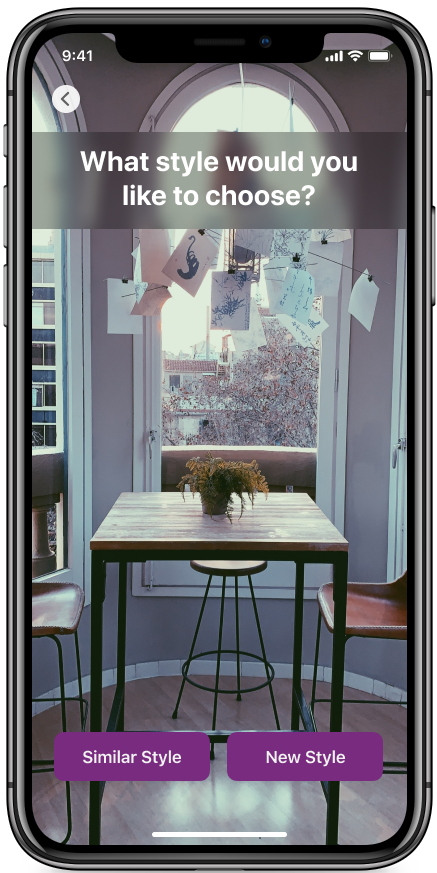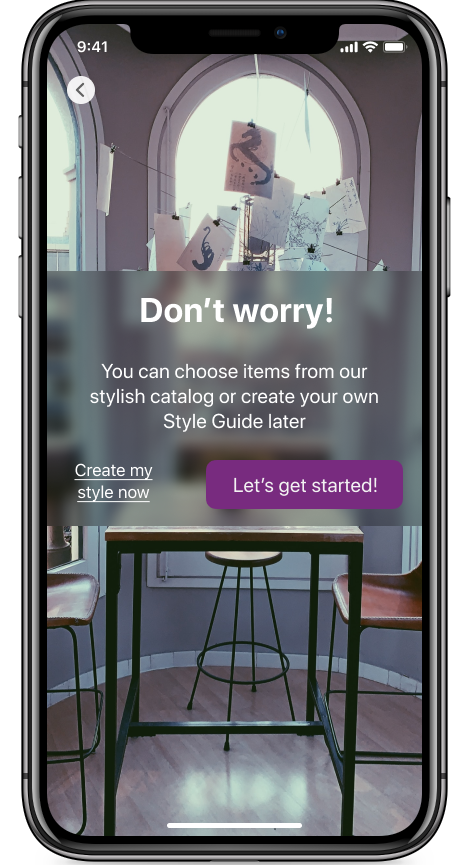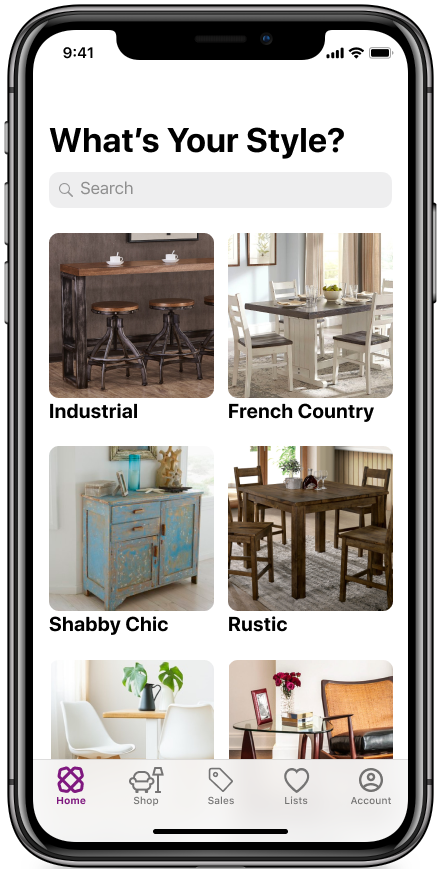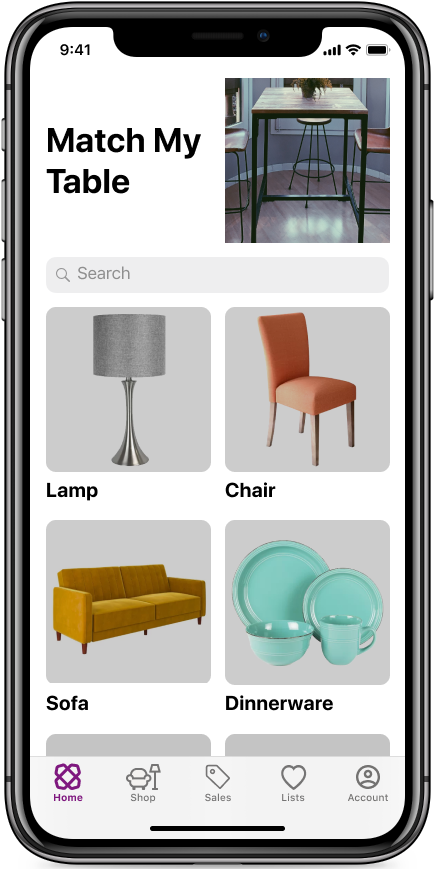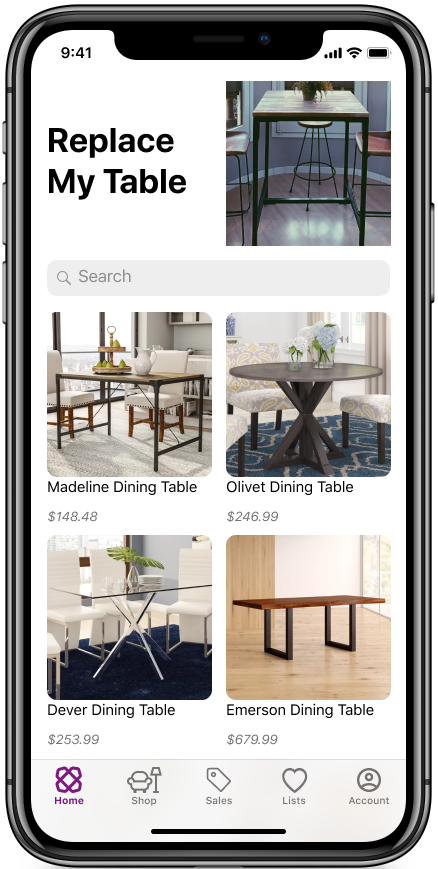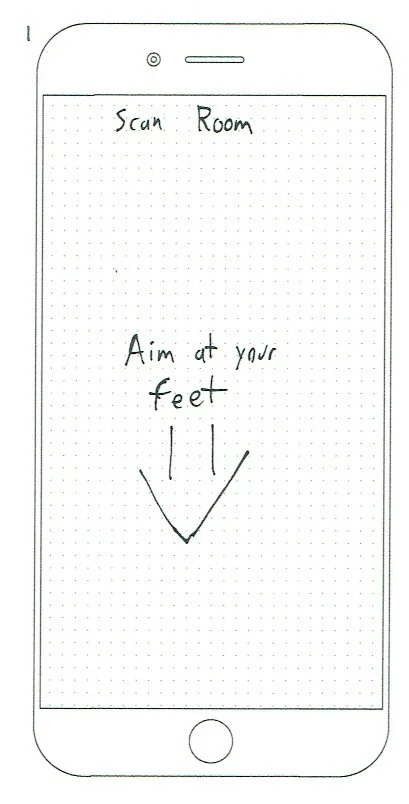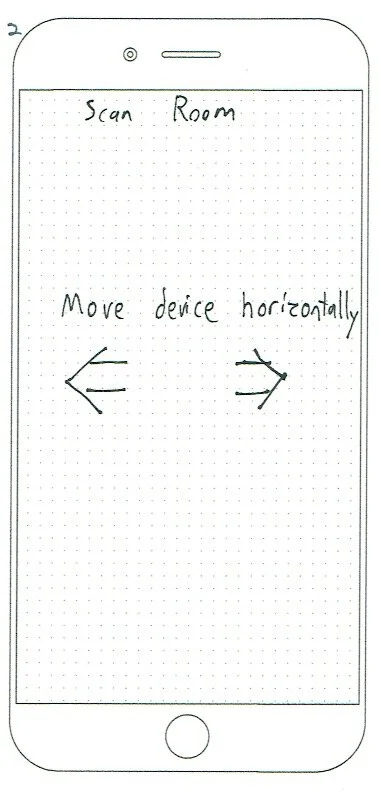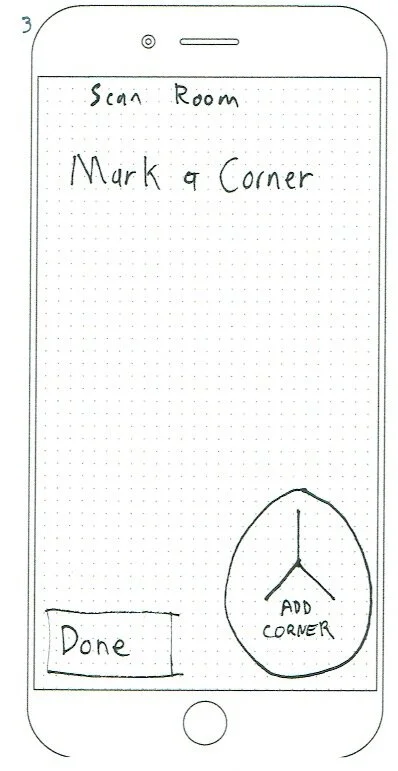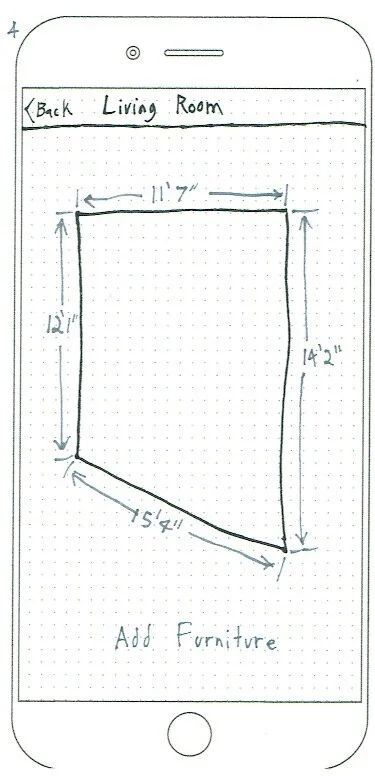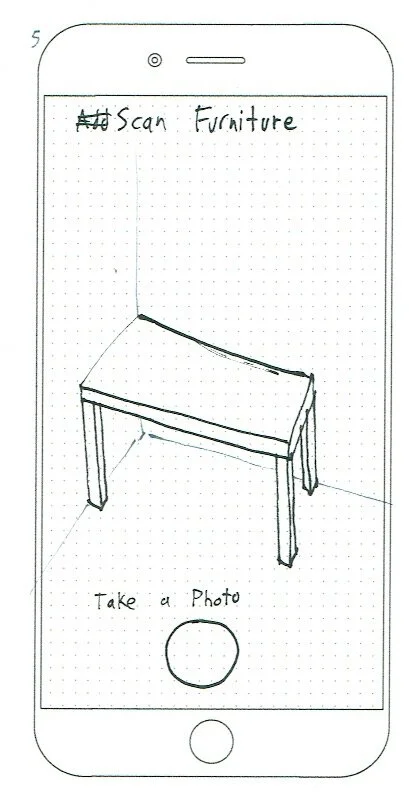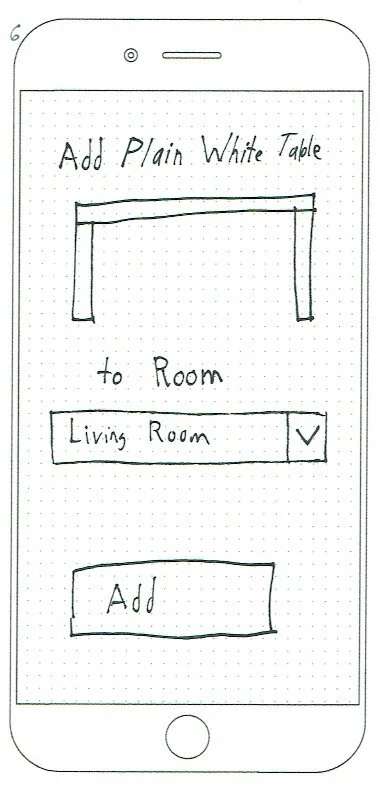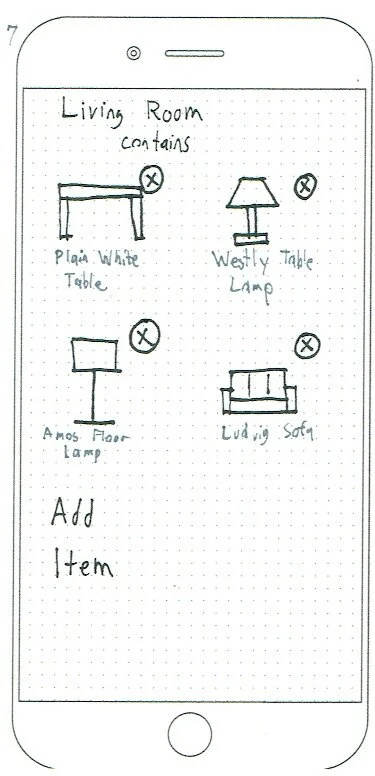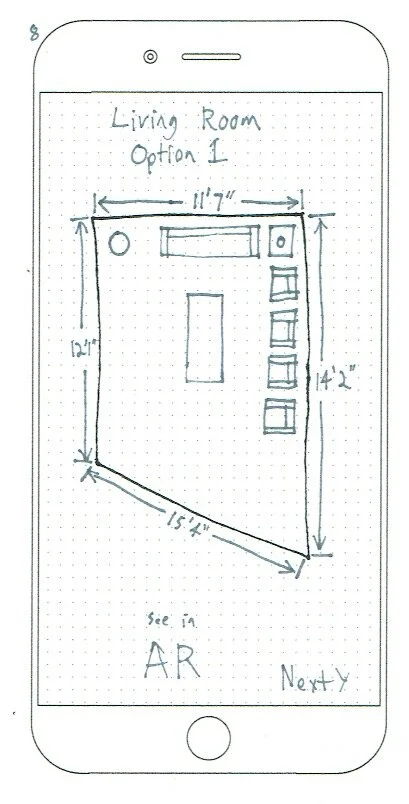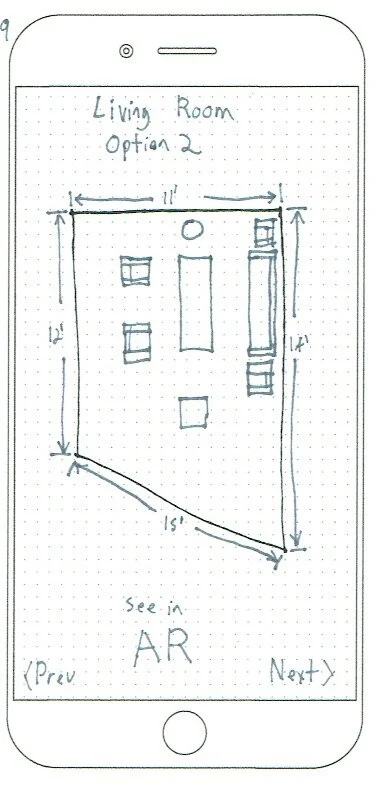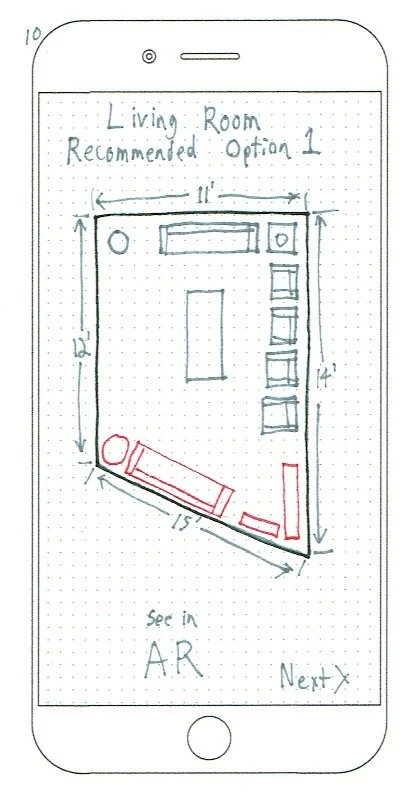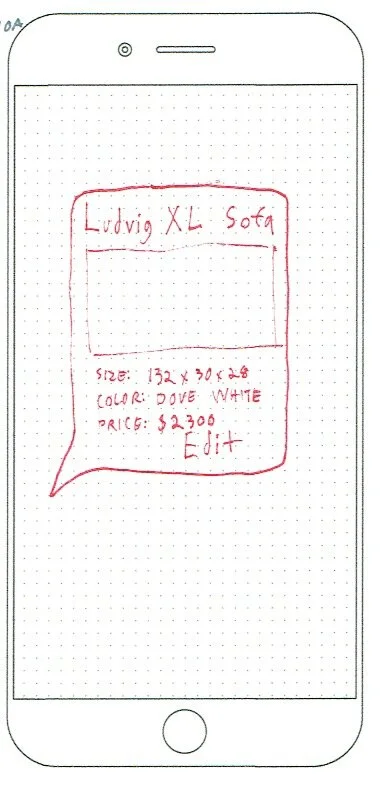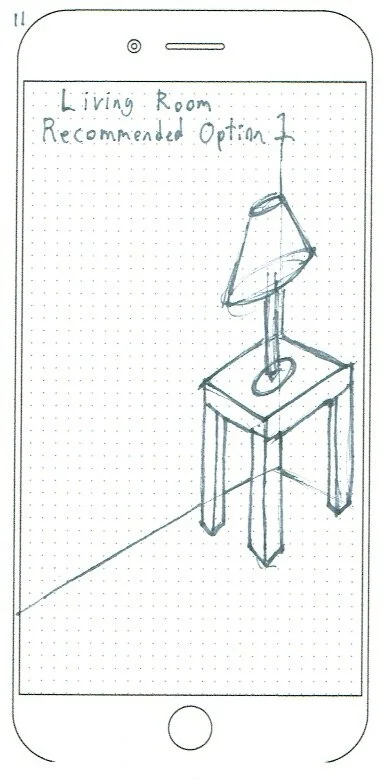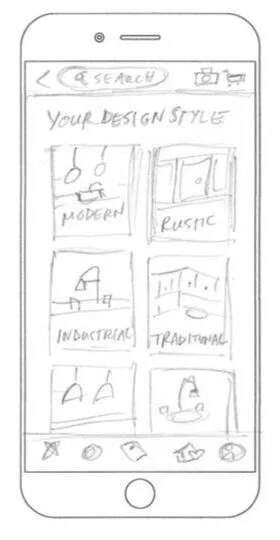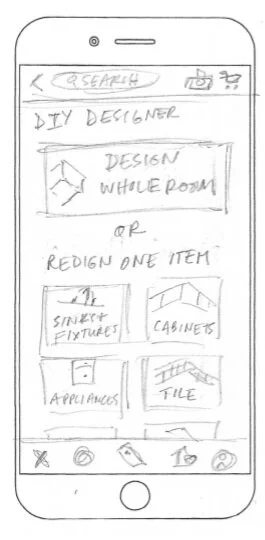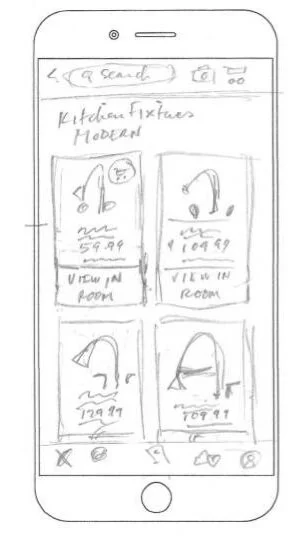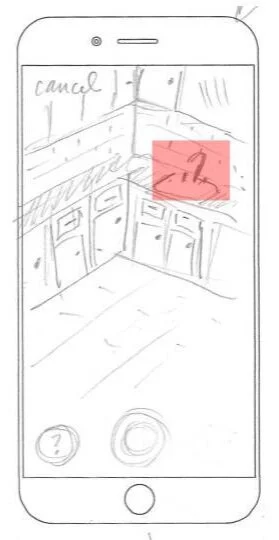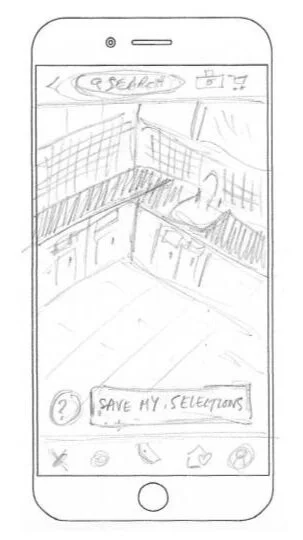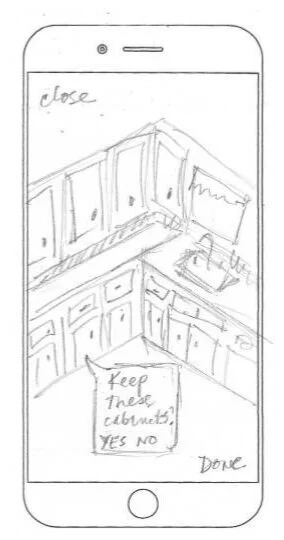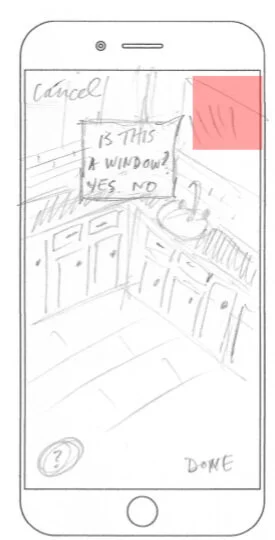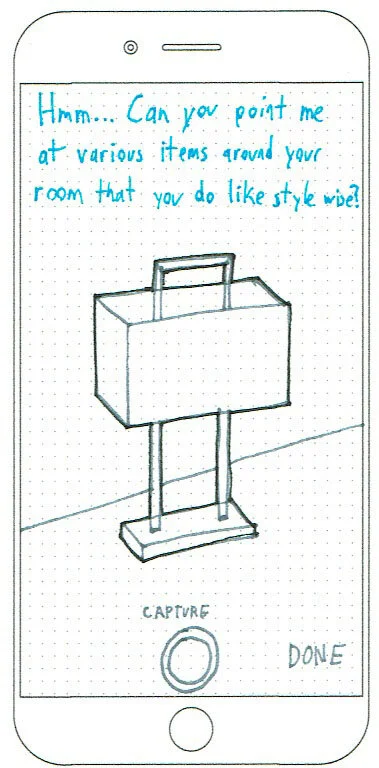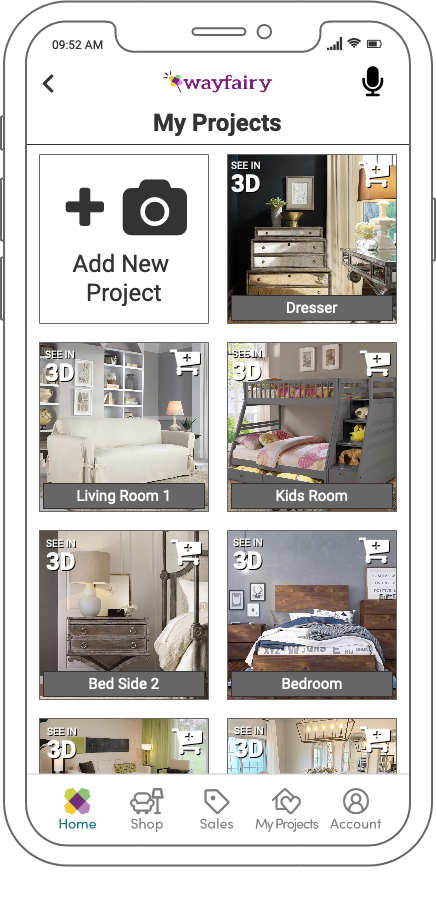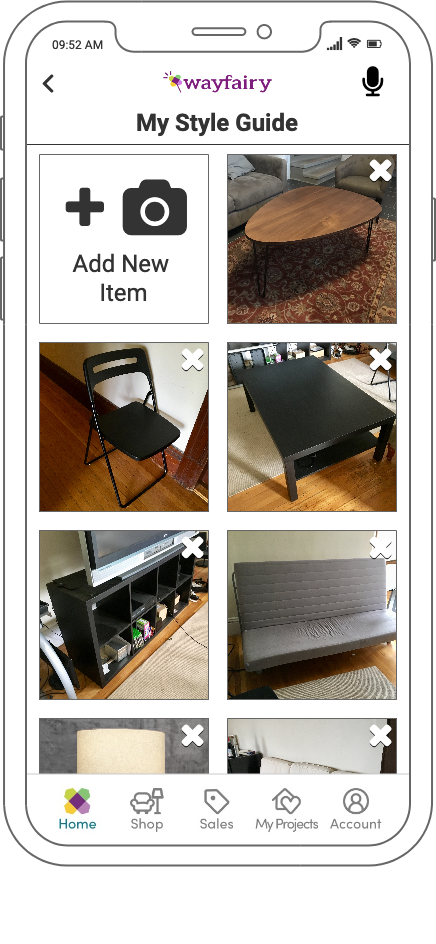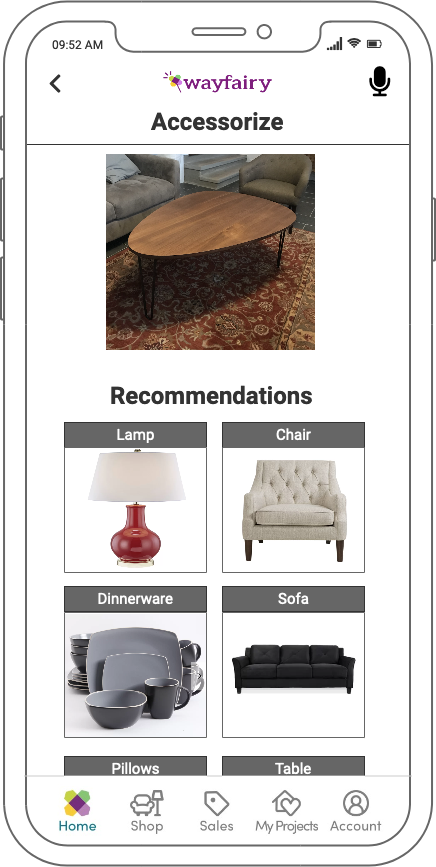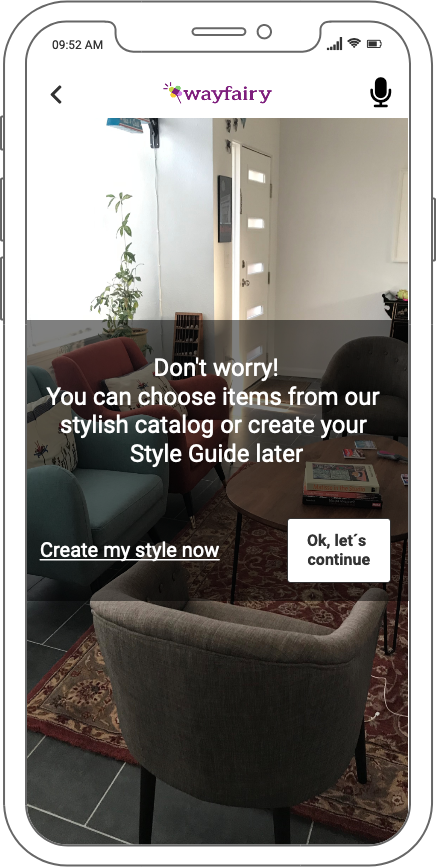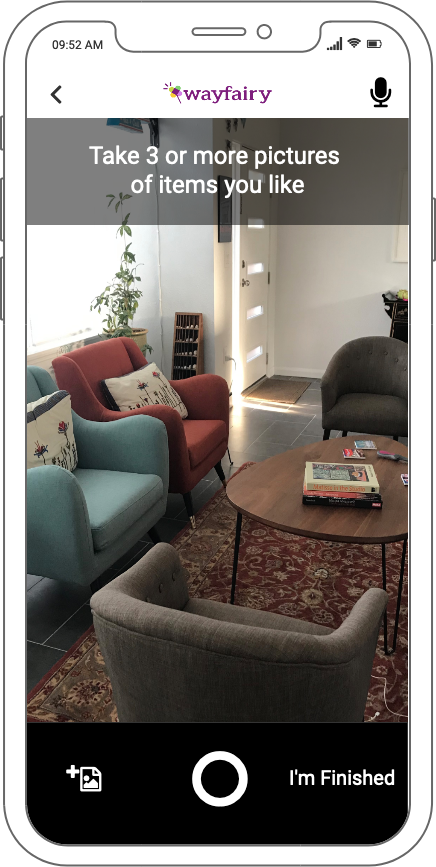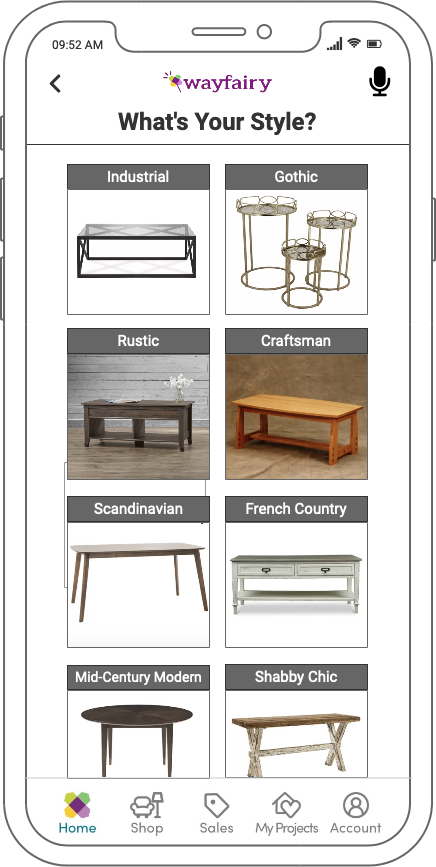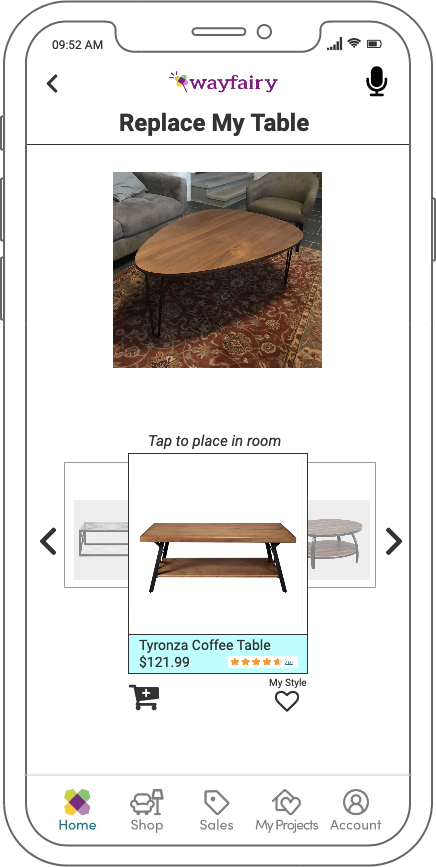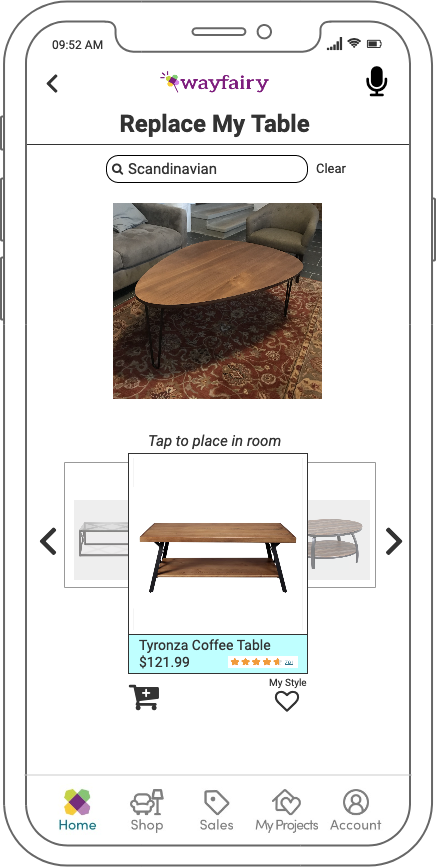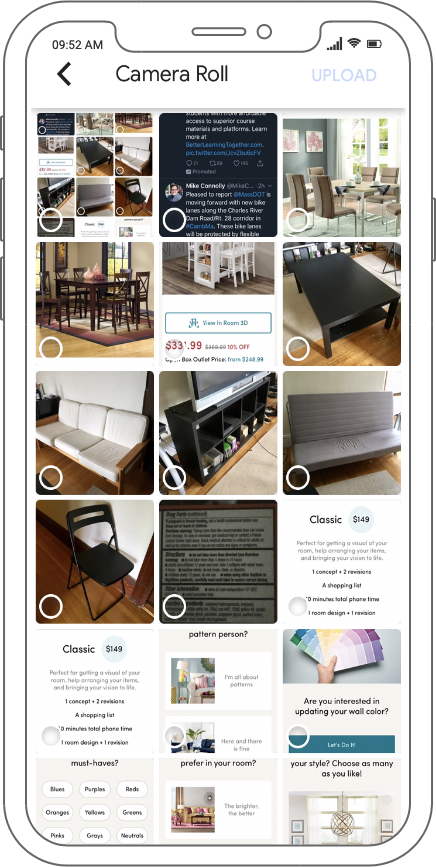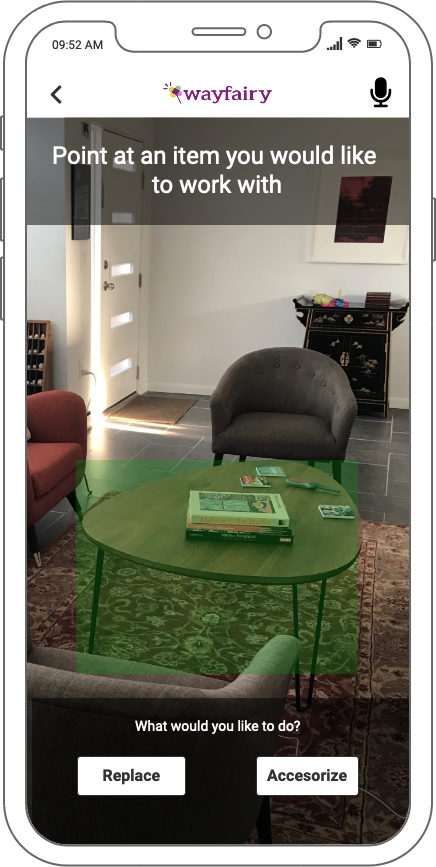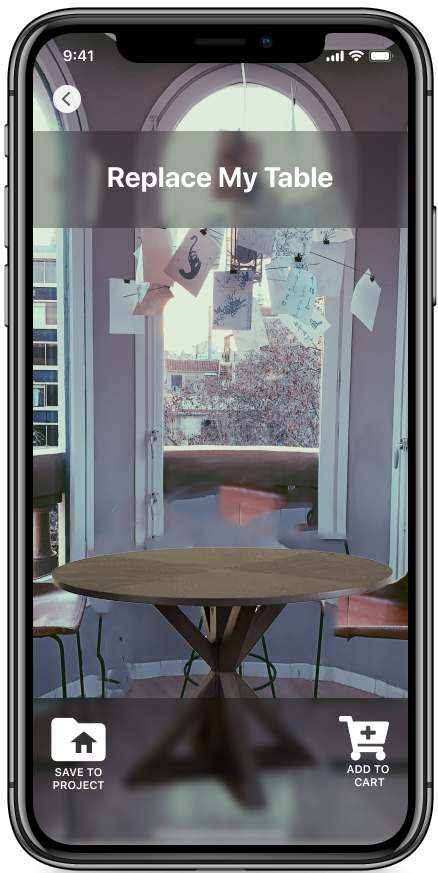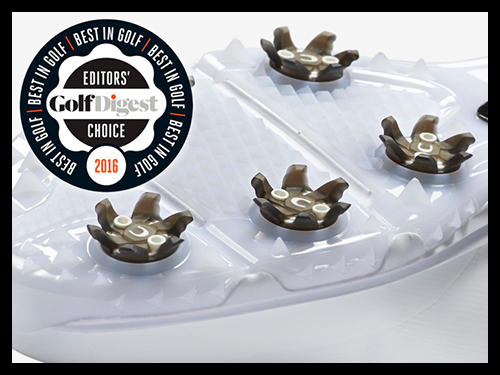Design Like a Pro with Wayfairy
This project consisted of myself and two teammates. We designed an intelligent user interface that better took advantage of Wayfair’s capabilities.
Those were some of the final screens I created in Figma. Now let me show you the process.
Backstory
This project consisted of myself and two teammates.
For this project, we created an Intelligent User Interface to make a product better.
We surveyed the landscape, to see what could use an IUI.
Ideation Research
We ideated on ways we could use an intelligent user interface.
Automated Furniture Layout
We ended up with Automated Furniture Layout, for a few reasons.
Personal interest: Our team found the topic interesting and had spoken with many people who have recently moved and have expressed a desire for someone to assist in designing their spaces. Our team members have moved a lot and understand the need for this kind of service.
Product landscape: Many products are available but none of them addresses need for personalized real-time advice on a mobile app in 3D.
Research: Preliminary research shows that technology does exist to enhance current tools but it is not available in one comprehensive product.
Potential Benefits: Benefit to consumers (low-cost, high-value design solutions) and retailers (additional revenue) is high.
Current Landscape
Huge interest in home improvement TV shows is driving interest in DIY home design projects
According to the U.S. Census Bureau, the average person in the United States moves residences more than 11 times in his or her lifetime*
55% of people living with friends or strangers don’t feel comfort in their own home☨
13% of people living with family or alone don’t feel comfort in their own home☨
☨ IKEA. (2018). Life at Home Report.
* Chalabi, M. (2015, January 29). How Many Times Does The Average Person Move?
And the Survey Says...
Our survey of potential customers yielded received 93 responses:
68% of participants responded Yes when asked “When you think about your living space, do you ever wish you had design help?”
72% said they would use an app that helps redesign their living space.
47% said cost would prevent them from using an app, while 26% chose “other,” with common reasons being overall skepticism and difficulty of use.
45% of participants had a design background, yet still often wanted design help.
Consumer Need
People who want to decorate a living space need a good, immediate, cost-effective plan and recommendations, as many lack the knowledge to design the space that matches their desires.
“Many people hire...[Interior Designers]...precisely because they lack the vision themselves and need someone else to have it.” -- Zack Sokol, Vice, 2015
“If…[the design app] is...beginner level, that’s a level higher than I possess. If I had an empty room and didn’t have the time or inclination to find and buy everything to pleasingly fill it, any of these services would be a vast improvement over what I might do myself.” -- Roy Furchgott, Washington Post, 2018
Value Proposition
We propose a mobile app that scans the home and provides cost-effective design guidance for redecorating a room based on recommendations from Wayfair’s vast inventory that match one’s design sensibility.
This recommendation feature gives users a clear and easy path to buy furniture from Wayfair, thereby driving profit for the company.
Why Should Our System Get Smarter?
Low-cost, high-value design solutions are what consumers want
Wayfair has expert interior designers who can help develop the app
Chance to get ahead of the competition
Technology is already available
Additional revenue from shoppers we currently have
What’s Out There Now
Layout - automation
Furniture layout systems that allow users to reorganize furniture following spatial interior design guidelinesDesign patterns - automation
Implementation of design patterns & principles into codeFurniture Suggestions
Looks at your current styles or styles you like and suggests furniture that suits youAugmented Reality
Furniture that can “stay in place” when the app is closed and can be shown to other people on different devicesInterior Design Websites
Design ideas that work in a space
Wayfair’s Current Design Services
Currently you can get a design consultation from a Wayfair designer. But there’s some areas for improvement with this.
Costs money up front ($79 for a 30-minute phone consultation)
Requires time - to talk to the designer about revisions and wait for them to work
Has limited revisions for consumers
Only returns a 2D image, which requires abstraction
Wayfair currently has an AR app. This allows you to recognize one item, and find something similar. It also allows you to place that one item you find in AR. However it you cannot place multiple items, or see pairs of items that go together.
Current Challenges
Cost: $79 for a 30-minute phone consultation
Time: talk to designer about revisions and wait for them to work
Burden of input
Limited revisions
View: 2D vs. 3D
Wayfairy
Capitalize on our 10+ million users
Utilize current AR capabilities
Tap into our talented team of expert designers
Combine AR & Interior Design services
Offers something for those who can’t afford our current human design consultations
Allows for more iterations and revisions
Reduces time to get advice
Allows you to see items in your space
How It Will Work
Work with experts (Interior Designers) to create the ontology and a set of standard rules about style and matching.
Use algorithms for a mixture of supervised and reinforcement learning. To train the algorithm to be correct to us, we start by inputting a bunch of good design, e.g.:
complimentary colors go well together
table of certain size typically goes with chairs
Then we train the machine. We get give the machine inputs, and it outputs potentially good design options. We then rate those “Good” or “Bad.”
Then we continue until the machine is good to some specification, let’s say 95% good designs.
Is it Worth the Investment?
Yes, Large growing market
2019 - $17 billion Interior Design, 3.5% growth per year (IBISWorld, 2019)
Costs
Hire coders to code the system (for iOS and Android, separately)
Work with interior designers to test and refine the system and create specific data for the app to provide advice to users
This is technically feasible, linking current technology--not designing new technology from scratch
Prototype 1 - Maximalist
For our first prototype, we created two versions with all of the features we could desire.
Version A
Version B
Feedback on Prototypes A & B
In addition to option to buy an item, include immediate recommendations to replace feature that you’ve selected
Give the system personality, perhaps in keeping with some of the current Wayfair designers’ personalities. Could say things like “Do you really want to keep that tile?” or “You’re not going to pick that sink, are you?”
Simplify!
Reduce what it does
The project only needs to be one level beyond what is currently available, and ours is 10 levels ahead
Prototype 2 - Minimalist
For the second prototype set, we created a voice activated minimalist app. Using your camera and your voice, you talk to the app and it gives you design suggestions.
Scenario 1
How can I help you?
I want something that can match this table
Ok. Here is a lamp, chair, and rug that could work.
[row of options at bottom, says click to place in 3d, and edit]
Do you have anything more specific in mind?
[Person places chair in 3d]
I want different chairs. But that’s not my style
Hmm, can you point me at various items around your room that you do like style wise?
[Person points and captures images of table, lamp, sofa]
Ok, here are some different chair options.
[person places chair in 3d]
Scenario 2
How can I help you?
I want a new lamp
Ok, do you have any style in mind?
I don’t know, black, under $50?
Ok, here are some black lamps under $50
Feedback
Too simple, what if they can’t talk?
Some of the features from the first version were nice, can we incorporate them in a new version?
Prototype 3 - Just Right
We created the flow for a third iteration, trying to stay simple while having useful additional features.
Final Result
After tweaking some wording and design choices, I created a final version to more beautifully show off the concept.
Interact with the Figma Prototype - Click Here
Appendix: References for Current AR/AI in Design
Layout - automation
Merrell, P., Schkufza, E., Li, Z., Agrawala, M., & Koltun, V. (2011, August). Interactive furniture layout using interior design guidelines. In ACM transactions on graphics (TOG) (Vol. 30, No. 4, p. 87). ACM.
Weiss, T., Nakada, M., & Terzopoulos, D. (2017). Automated Layout Synthesis and Visualization from Images of Interior or Exterior Spaces. In 2017 IEEE Conference on Computer Vision and Pattern Recognition Workshops (CVPRW) (pp. 41–47). Honolulu, HI, USA: IEEE.
Design patterns - automation
Eden, A. H., Gil, J., & Yehudai, A. (1997). Automating the application of design patterns. JOOP, 10(2), 44-46.
Furniture - suggestions
Liu, T., Hertzmann, A., Li, W., & Funkhouser, T. (2015). Style compatibility for 3D furniture models. ACM Transactions on Graphics (TOG), 34(4), 85.
AR
6D.ai - AR Platform. APIs for Augmented Reality and the AR Cloud. With just a smartphone camera, 6D.ai's SDK creates a 3D mesh of the world around you. App developers can easily relocalize multiple cross-platform players into the same coordinate system. Objects remain persistent across sessions while respecting occlusion




